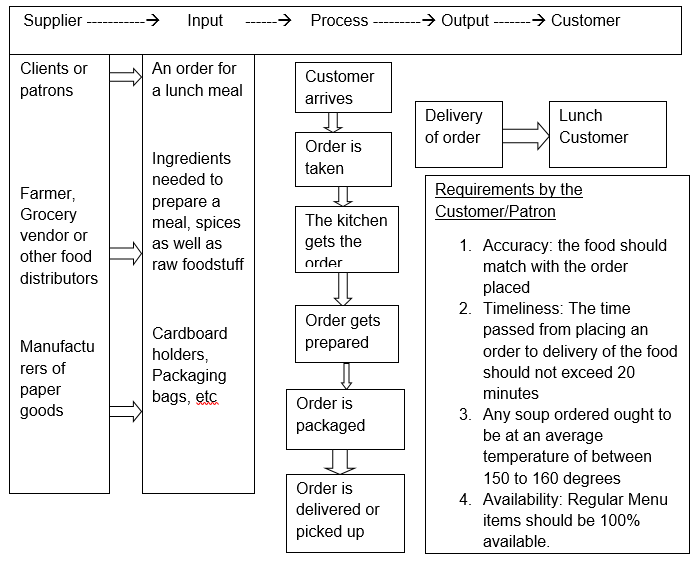Flow Chart SIPOC
Whenever an organization plans to begin new process improvements or management activities, it is crucial to obtain a high-level understanding of the full scope of the process at hand. In such a case, a SIPOC Process definition assists the process owner as well as those that are working on the new process to agree on a set of defined boundaries for the task at hand. Having a SIPOC flowchart provides for a structured manner to effectively discuss the process ahead and achieve consensus on what it involves prior to rushing off and coming up with the required process maps.
Elements of a SIPOC
The main elements that should be present in any SIPOC are the Suppliers, Inputs, Processes, outputs, and finally, Customers or patrons. However, there still exist several elements that one can add so as to make the SIPOC process effective or useful. The process of staff recruitment is one of these elements. It gives the organization the right people that possess the right skills to drive forward its vision. The process owner element is assigned to the individual that bears most of the responsibility for the completion of the end to end process. In the case of a restaurant such as the Arabica Coffee restaurant, the shift manager may be the appropriate person to be referred to as the process owner.
The flow chart that outlines the restaurant’s SIPOC has a start and endpoint. In this case, the start point consists of providers of crucial goods or items such as farmers, and paper suppliers for the required food packaging. The endpoint is at the point when the customer receives his or her order and either settles down to eat or walks out of the restaurant with the packaged meal. The time between the start and endpoints may vary depending on several factors.
In this case, an auxiliary starting point may be moved to the point where the customer makes an order. This would be appropriate in the event that the SIPOC is geared towards improving the time it takes for the customer to finally get his order. The SIPOC flowchart illustrates the link that exists between the internal and external processes in the restaurant. The quality and availability of the order to the patron or customer is directly dependent on external factors such as the food and packaging suppliers. Any changes or delays that plague the external actors directly affect the quality of service to the end customer.
SIPOC for Arabica Coffee Restaurant Flowchart
